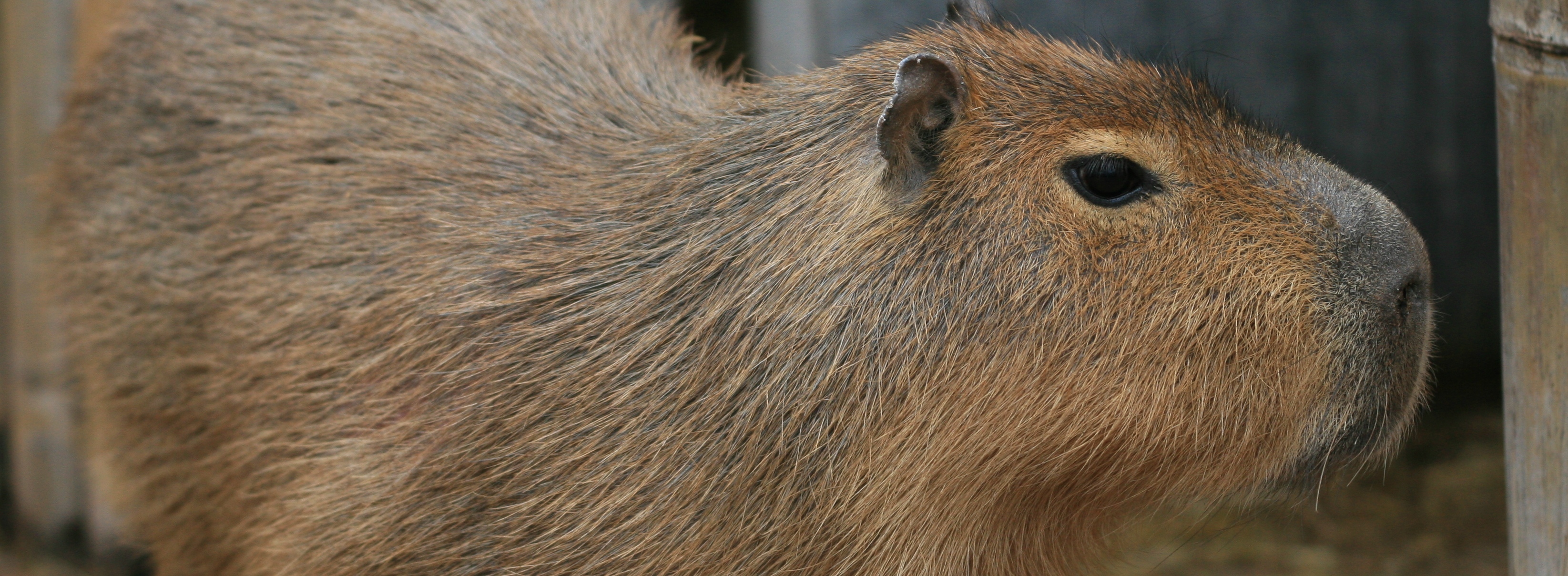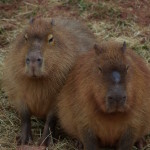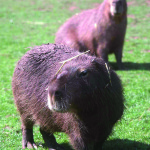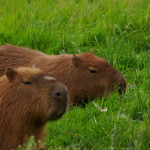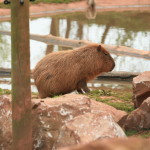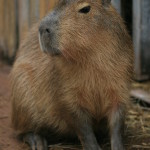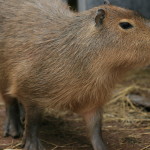Cayabara
Hydrochaeris hydrochaeris
Habitats: The Capybara inhabits densely vegetated areas around ponds, lakes, rivers, streams, marshes and swamps. It does not use a den but shelters in thickets. If disturbed or threatened it enters the water, where it swims and dives with ease. The capybara is most common on the grasslands of the Llanos in Venezuela and Colombia, and the Pantanal of Brazil giving it its common name, which translates as “master of the grasses”.
Threats: The capybara is extensively hunted for its meat and hide, as well as for a grease from its thick, fatty skin (which is used in the pharmaceutical trade); Sometimes killed by farmers as a pest, either because it attacks crops, or because it is mistakenly viewed as a competitor with livestock. The conversion of forest to grassland and regimes of cattle ranches (such as predator control, provision of water, and burning), may be helping to create more suitable capybara habitat. However, some local capybara populations have decreased or even disappeared where hunting pressure is intense, such as near human settlement and along rivers the main travel routes of hunters.
Social Behaviour: It is commonly found in groups of 20 animals
Food: The diet consists mainly of grasses; it also eats aquatic plants, grains and melons
Information: There is usually one litter per year around 150 days gestation, the average litter size is 5 young. The young are able to follow their mother and eat grass shortly after birth. They live around 10 years.
Range: The single genus and species occurs in Central and South America, from Panama, including Colombia, Uruguay and north eastern Argentina.
Conservation: Our capybara shares their enclosure at South Lakes with our bears. Our charity The Wildlife Protection Foundation funds the Chaparri Ecological Reserve in Peru to help conserve the Andean Spectacled Bear. To find out more you can go to http://www.wildlifeprotection.info/

